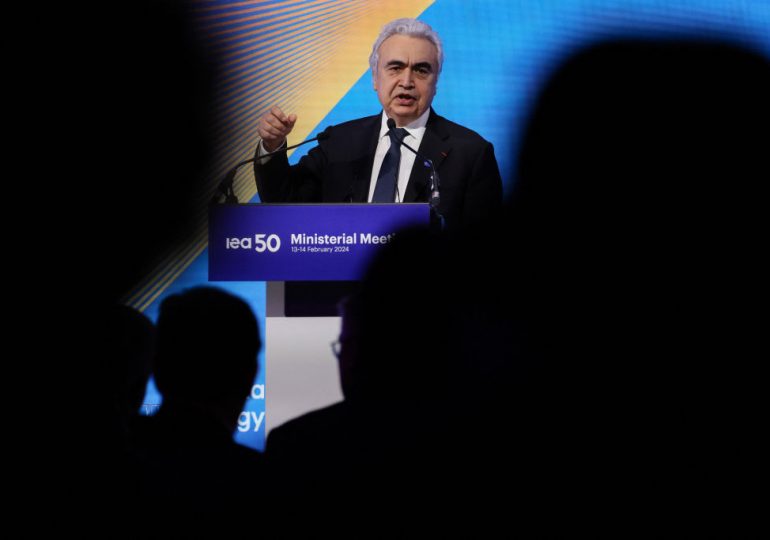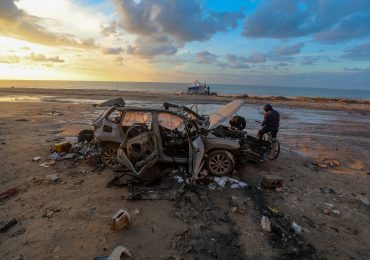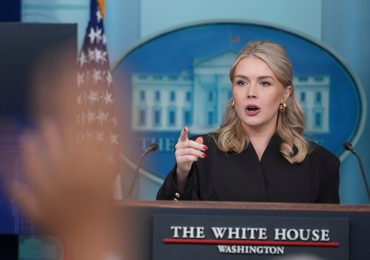(To get this story in your inbox, subscribe to the TIME CO2 Leadership Report newsletter here.)
In the immediate aftermath of the Russian invasion of Ukraine, many energy experts spoke about the energy dynamics as a hard-to-control, slow-moving train wreck. The vacillations of both the weather and Vladimir Putin would determine whether Europe—reliant on Russian gas for 40% of its gas needs—could make it through the winter without blackouts—and the ensuing political chaos.
[time-brightcove not-tgx=”true”]
Fatih Birol, the head of the International Energy Agency (IEA), saw it differently: a series of key policy moves, executed quickly and diligently, could stave off disaster. Within weeks, the IEA had crafted a 10-point plan to do just that. Countries would need to implement aggressive energy efficiency programs, create subsidies to keep energy prices in check for consumers, and keep their nuclear power plants running longer than anticipated. Significantly, Birol argued, the European Union should accelerate its clean energy and climate ambitions. “Government policies do matter,” he told me in his office in Paris last year, reflecting on the IEA’s response to the crisis.
The plan worked. The European Union survived two winters with minimal disruption while continuing to cut its emissions. On Feb. 13, at an event in Paris commemorating the agency’s founding 50 years ago, European Commission President Ursula von der Leyen said that the bloc had made it through those winters “first and foremost, thanks to you, Fatih Birol.”
The moment is emblematic of the rise of the IEA from a sleepy outpost in Paris mainly focused on crunching oil market data to a significant geopolitical player with a leading role in the energy transition. In the nearly nine years since he took over, Birol has led the agency’s efforts to publish a flurry of reports and analyses that show policymakers where countries are on their decarbonization journeys and how they can accelerate. “I don’t think there’s an organization right now that’s as impactful at helping all of us transition into clean energy,” says David Turk, the U.S. deputy energy secretary who previously worked at the agency.
But, for all the IEA’s vocal support, success in meeting climate goals will depend on whether countries and businesses actually follow the decarbonization scenarios the IEA lays out. Supportive energy officials say the IEA’s work has created a clear path to follow; oil and gas industry stalwarts remain skeptical, if not indignant, that the IEA’s scenarios will come to fruition.
The outcome of the debate will have significant consequences for the future of climate action, but we don’t need to wait for it to play out to understand the significance of the IEA. Spend enough time in climate circles and you’ll almost certainly hear about the need to evolve international institutions to make them “fit for purpose.” The World Bank needs to galvanize more investment in climate solutions. The United Nations needs to bring countries to a joint solution to address global warming. And, while success has come slowly elsewhere, the IEA has actually evolved to remain useful at this juncture. Decarbonizing the economy is a gargantuan task; the IEA has built a road map.
The IEA was born half a century ago out of a different crisis. In 1973, a group of Arab oil producing countries blocked exports to the U.S. and a handful of other countries in response to their support for Israel. Energy prices skyrocketed and shortages ensued. In response, the U.S. and a group of 16 others, most of them European, formed the IEA as a counterweight. The organization wouldn’t set policy in member states like the OPEC oil cartel does, but it would provide data, offer recommendations, and create a venue for collaboration.
The energy crises of the 1970s eventually faded, and over the following decades so did the organization’s influence. By the time Birol took over the agency in 2015 many environmental advocates had come to view the IEA as too cozy with the oil and gas industry. Indeed, for Birol’s first five years leading the organization activists vocally criticized the IEA for underestimating the potential growth of clean energy and failing to lay out policy roadmaps that would adequately address climate change.
Behind the scenes, however, Birol, who had spent two decades at the agency, including as its chief economist, had already set out on an ambitious effort to change the organization’s agenda and reputation. He sought to bring emerging economies into the IEA’s fold and redoubled its expertise in clean energy. “Governments need to give very clear political signals,” he told me in 2020, explaining his focus on clean energy.
The key moment came in 2021 with the release of the IEA’s so-called net zero report. The document laid out 400 milestones that, if taken together, should put the world on course to eliminate its carbon footprint by the middle of the century. Crucially, the agency said that no new investments in new fossil fuel resources were needed to keep the lights on. That statement became a rallying cry for climate advocates who praised the report for illuminating the necessary path forward. At the same time, energy companies criticized it as too optimistic. To stop new fossil fuel drilling would mean expanding renewables and using energy with record efficiency.
Since then the fissure has only grown. The IEA has published a series of key reports focused on how the energy system needs to change to address climate change, and, last fall, the IEA said that even under existing policies demand for oil and gas would peak by 2030. That statement, and the profound implications for investors and policymakers, once again shook up the public debate. “Every speech I give around the country tells people that within the next decade, absent any new climate policy, we’re going to see peak oil and gas,” says Jonathan Wilkinson, Canada’s minister of energy and natural resources, reflecting on the significance of the report.
The pushback was ferocious. Industry voices and OPEC countries dismissed the IEA’s finding as politically motivated. Saudi Energy Minister Prince Abdulaziz bin Salman told a conference in September that the finding amounted to “political advocacy.” In November, OPEC released a statement decrying the IEA and calling its assessment of the future of oil “undiplomatic to say the least.”
The intensity of the debate is an indicator of just how influential the IEA has become. IEA reports aren’t predictions; they instead offer an assessment of how the energy system will change under certain conditions. Its net zero assessments evaluate which policies would allow the world to decarbonize. And yet even releasing such an analysis is enough to leave the oil and gas industry feeling threatened.
There is a kernel of truth to the pushback. The IEA’s net zero pathway looks increasingly difficult as countries fail to implement policies at the scale the analysis demands. Policymakers and investors should not take for granted that the world will follow a sustainable development pathway—even if we should—and unfounded optimism could leave the world unprepared. And yet where would we be without such guideposts? The IEA’s research dares to imagine what decarbonization would look like—and it’s hard to see the world getting to net zero without such an effort.
Outside old-school energy circles, Birol appears to be winning the public debate. Birol is on the speed dial of energy ministers who rely on him for advice on how to navigate both long-term energy transition challenges and short-term needs. He attends the G7 summits—joining in the family photo alongside heads of government. In 2022, member countries gave Fatih Birol an unprecedented third term as the head of the agency, and, last week, energy ministers gathered in Paris formally agreed to embed climate change into the agency’s mission.
And, in this tense time for geopolitics, even outsiders want to join what had once been a club of western powers. Last week, countries formally began discussions on India’s request to become a full member.
Many things stand out about Birol in my many conversations with him over the years. He is deep in the weeds of energy policy and simultaneously skilled at explaining his analysis in an accessible fashion. He is energetic, almost jovial. And, despite his seriousness, he somehow often manages to bring up his favorite soccer club from his native Turkey (he has put his team’s colors in the design of key reports, for example).
What I find most interesting, and in many ways different from other leaders of his stature, is his ability to juggle the long and short view of energy and climate. He has adapted the IEA to respond quickly to energy challenges—think of the response to Russia’s invasion of Ukraine. At the same time, he homes in on long-term strategic questions that often elude leaders focused on the next political cycle or quarterly returns. That forward thinking is in part what prepared the IEA to rise to occasion when climate broke through on the international agenda.
In a recent conversation in his office, Birol shared his “one piece advice for companies and investors”: pay attention to clean energy investment trends. Last year, more than $1.7 trillion was invested in clean energy globally. As the system transitions, fossil fuel projects risk being left in the dust—undesirable and unprofitable.
It’s an interesting reminder. Oil executives can complain as much as they want about Birol’s aggressive projections; the truth will ultimately be determined in the marketplace.
Leave a comment








